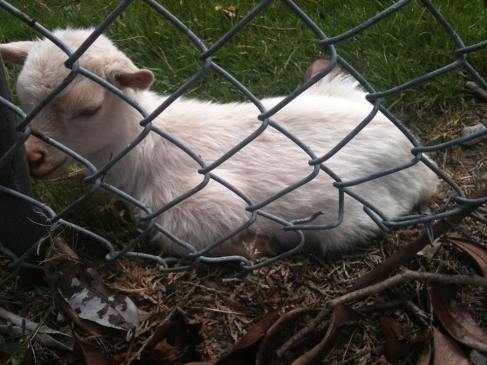So by “tomorrow” I would have another post, I meant “the tomorrow after I trying to learn how to poach eggs and twerk in my kitchen”. Also no, I’m not joking; I’ve never poached an egg before.
ANYWAY. Superbugs.

You know I have one of these.
Like the lice that evolved as humans and human habits changed, so have superbugs have evolved. “Superbug” is a blanket term referring to any bacteria that has evolved antibiotic resistance. Strains that were once easily susceptible to mild antibiotics, now require stronger and stronger drugs to be eradicated. So not only are the chances or prolonged illness and death increased, but more people have to deal with harsher drugs to cure an infection. Not good.
How does this happen? By frequent exposure, or infrequent, low-level exposure to antibiotics. I can explain how this works with one of my convoluted analogies (cause I haven’t done one of those in a while).
Many of you have probably heard of the businesses that will blast classical music outside in order to discourage hoodlums. The idea being that angry punks have no appreciation for Bach and Brahms and, finding the music annoying, will leave. If only one business were pumping the Baroque jams, then the kids would leave and find somewhere else to hang. Should a lot of businesses try this (whether or not angry punks are actually a problem), the kids would quickly become accustomed to the music. Similarly, if only a few businesses tried it, but not at volumes loud enough to be a proper annoyance, the kids would easily develop a tolerance and never leave. As a result, the businesses that actually have a problem with angry punks and hoodlums will have to play less and less mainstream music (like opera or free-form jazz) louder in order to clear their sidewalks. But at a certain point, they’ll alienate their own customers on top of the kids that want to smoke and curse outside. Either way, the business now has a lot of Classical Resistant Angry Punks (CRAP) to deal with.
In this scenario, the kids are the bacteria and the music is the antibiotic. When people use antibiotics unnecessarily (like when folks demand some for a viral infection), not only does it kill off your natural microbiota, but the frequent exposure ensures that only bacteria tough enough to withstand the drugs will survive. Remember, even your natural bacteria can be dangerous in the right place or population size.
Another problem occurs when patients do not finish their course of antibiotics. Many people assume that just because they feel better, they can stop taking medicine. However, this can end up only killing off the weaker bacteria, leaving resistant strains to proliferate and evolve stronger resistance. Bacteria can also pass their resistance on to or receive resistance from others. That’s how we get multiple-resistant pains in the neck like Staph.
If you have a bacterial infection that will not clear up on its own (like many ear infections), ABSOLUTELY take the antibiotics your doctor prescribes. Just make sure you finish the dose and do NOT demand antibiotics if they’re not necessary. Many people (especially parents) want to feel like they’re doing something about an infection, but antibiotics are not always the answer.
Hugs not drugs, guys.
Although hugs will not cure TB.
I strongly recommend drugs if you have TB.
The RIGHT ONES though.
Minocin will not help.
Just talk to a doctor, OK?
Ophid out.
Source
–. 2014. “Stop The Spread of Superbugs.” NIH News In Health. March 6, 2015. < http://newsinhealth.nih.gov/issue/feb2014/feature1>






